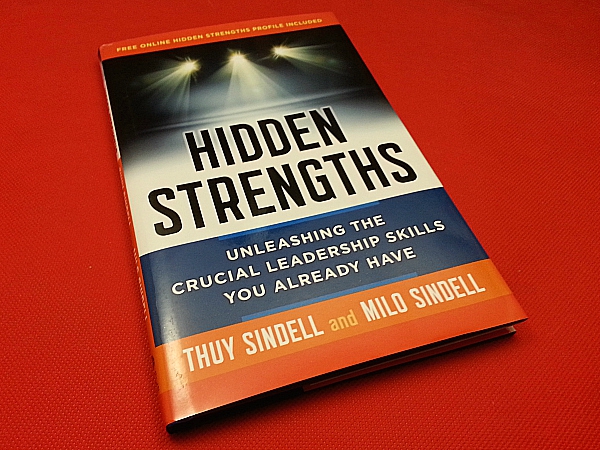The book – Hidden Strengths – Unleashing the crucial leadership skills you already have – by authors Thuy (pronounced Twee) and Milo Sindell aims to highlight as the untapped opportunity.
You cannot get away from the ‘Bell Curve’. When it comes to your leadership skills there is a clear ‘Bell Curve’. There are 28 leadership skills that leaders draw upon. Your Natural Strengths make up the top 20 per cent of your skills. As the name suggests, these come naturally to you. The bottom 10 per cent of the ‘Bell Curve’ represents a list of your weaknesses because you are really not going to be good at these even if you slaved at these every single day of your life. That leaves a whopping 70 per cent of the skills that are your hidden strengths – stuff that you are neither very good nor very bad at. This is what this book – Hidden Strengths – Unleashing the crucial leadership skills you already have – by authors Thuy (pronounced Twee) and Milo Sindell aims to highlight as the untapped opportunity.
Leaders are people who have a growth mind-set. They identify learning opportunities and constantly hone their skills to stay relevant. Robert Kaplan and Robert Kaiser, the authors of Fear Your Strengths warn us that an overused strength is actually a weakness.
Many leaders are proud of their ability to speak spontaneously and convincingly at short notice. This gets noticed early in their career and they are frequently given the chance to present their ideas before others. At a point of time, this becomes a derailer. The leader only speaks and forgets to listen. Like a muscle that has atrophied because of low usage, the leaders often lose the ability to ask people for their point of view. They act as if there is nothing to be gained from hearing others.

Your “strength” is a combination of your natural talent, plus the knowledge and experience and the skills needed to actually do it. Talent plus knowledge plus skills reflects your natural strength. Your weaknesses arise because either one or more of these three elements is missing. To develop your hidden strength you need to figure out opportunities to practice these skills. That will help grow the hidden strengths.
The business environment is constantly changing. So no one can rely on their Natural Strengths to steer them through their career. The successful leaders develop their ability to learn. Hidden Strengths is the area to focus on as you craft your individual development plan. Leverage your natural traits and develop your skills through unrelenting practice.
What are these 28 skills that leaders need? The authors have grouped them into four categories:
1. Leading self
2. Leading others
3. Leading the organization and
4. Leading Implementation
Each of these categories has seven specific skills that make up the list of twenty eight. Some authors classify these skills as Intrapersonal, Interpersonal, Leadership Skills and Business Skills. Of these the intrapersonal skills or leading self is probably the hardest to develop. Being able to develop emotional control enough to not let your emotions overtake you when you are too angry, sad or happy is really a very hard skill to master. It takes effort and practice to take a hidden strength and turn it to a strength you can leverage.
I liked the premise of working with 70 per cent of your skills which remain underdeveloped. That certainly is a compelling proposition. What makes a person motivated to bring the hidden strengths to the forefront seemed to be the weak link. How does one develop the habit of being able to practice a skill once the initial enthusiasm has died down? This book does not address this aspect very well.
If you hate reading big fat scholarly books, this seventy five page book is just what will appeal to you.
(The author is the chief learning officer, Wipro Group. Follow him on twitter @AbhijitBhaduri).




4 Comments
Good Review. Must read the book
My little bit Abhijit,
Looking at This book and that of Marcus Buckingham will take time to lead the minds of HR to look for strengths in people due to legacys of PA and competency mapping that has ingrained in us the development philosophy of surfacing gaps and filling them up to make them better performers.
We have lost steam.
My struggle is to convince HResourcefulness to replae Human resource. Good luck.
Agreed, Leading Self is the most hardest part of Leadership..and yes identifying the blind areas is a must..!
Dear sir
what is section 10(1)c under fact act please explain
Regards
S.P. Khatana
9911231560